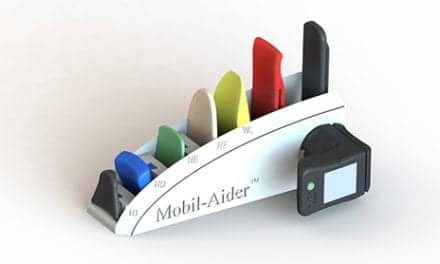The results of a new study published in the Journal of Neurology, Neurosurgery and Psychiatry demonstrate the benefits of high-intensity—as opposed to low-intensity—rehabilitation, and further confirms the known advantages of initiating therapy sooner following a stroke.
This work was carried out by ICREA Research Professor Paul Verschure and Belén Rubio Ballester —Group Leader and Postdoctoral Researcher at Institute for Bioengineering of Catalonia (IBEC’s) Synthetic, Perceptive, Emotive and Cognitive Systems (SPECS) Group, respectively— in collaboration with Nick S. Ward from University College London.
Intensive Therapy for Better Results
The researchers compared the results of two independent rehabilitation studies involving a total of 455 stroke patients who had lost some motor function in their arms. The first study, UCL’s Queen Square Upper Limb Neurorehabilitation, delivered a 3-week program of 6 hours of therapy per day (or about 90 hours in total). In the second study, IBEC’s Rehabilitation Gaming System, patients followed a 3 to 12 weeks program in which they received just 20 to 30 minutes of therapy per day (7.5 to 30 hours in total). In the latter group, the patients either received conventional therapy or virtual reality-based rehabilitation.
Measuring each patient’s improvement rate per week relative to their respective recovery potential, they found that the recovery of those who received 6 hours of therapy per day was significantly greater than those who received just 20 to 30 minutes. Their results also backed up previous findings that the advantages of rehabilitation decrease the later that therapy starts following a stroke. Despite this, they observed that the benefits of receiving high-intensity therapy were enough to overcome the detrimental effects of starting late, a media release from Institute for Bioengineering of Catalonia explains.
“These results show us that standards of care offered by many healthcare systems should be reanalyzed. While the benefits of high-intensity therapy are clear, a key question remains: how can we implement this in our healthcare systems? One potential answer is through virtual reality-based rehabilitation systems that allow patients to do therapy at home, such as those that we are developing in the SPECS group.”
— Belén Rubio Ballester, the study’s first author
Finally, the researchers predict that the patients who received high-intensity therapy would have shown even greater improvements if the duration of their program had carried on for more than 3 weeks.
“Many protocols follow a 3 to 6 months window of recovery, but we believe that it could actually be much longer than that — perhaps even years. Our results demonstrate the clear benefits of high-intensity, early-start rehabilitation programs for stroke patients.”
— Belén Rubio Ballester
[Source(s): Institute for Bioengineering of Catalonia, Science Daily]
Related Content:
Walk Faster to Help the Brain Dual Task After Stroke
Subthreshold Electrical Stimulation Aims to Aid Stroke Rehab
Getting Your ZZZZs? Its Impact on Stroke Recovery





